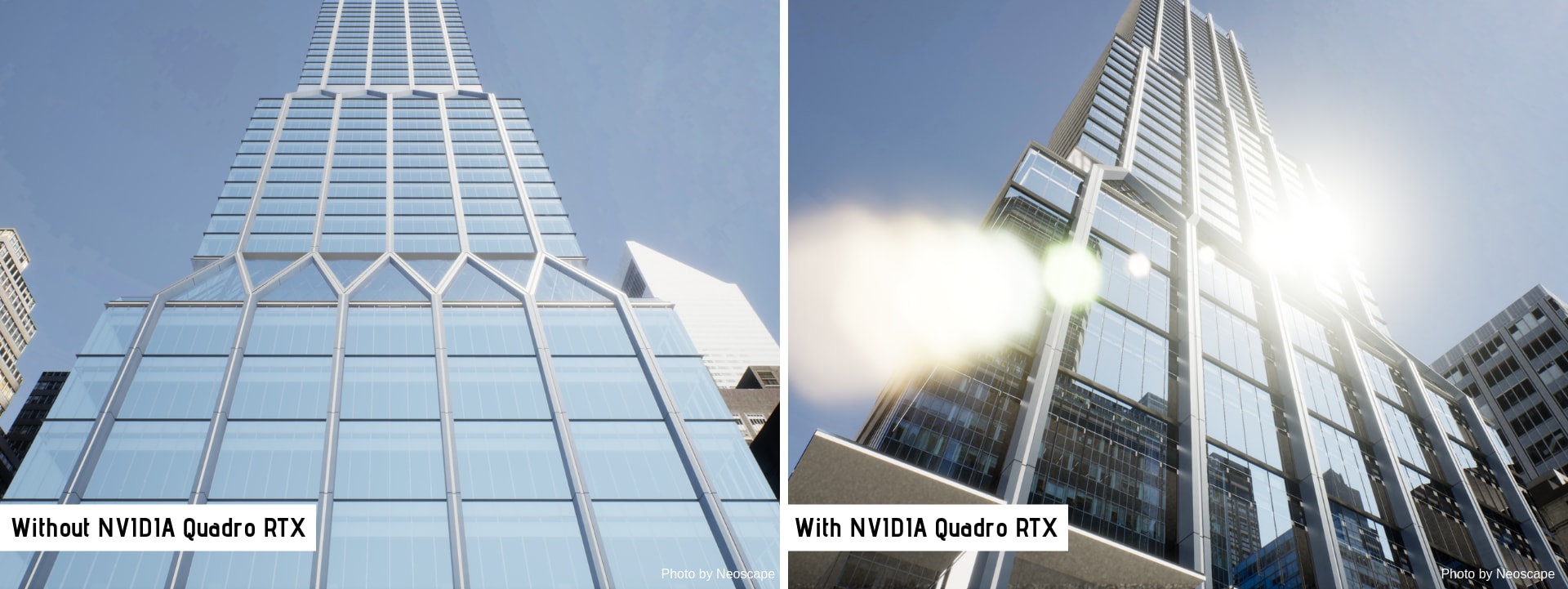As artificial intelligence (AI) moves further into the mainstream, more and more professionals are looking to harness it to meet their evolving needs. For many AEC-specific professionals, the next technological advancement is to implement AI – from machine and deep learning to edge computing, says Mike Leach.

Using the insights they now have at their fingertips, architects and other users across the AEC space are empowered to make better decisions surrounding everything from the flow of traffic to how weather conditions could affect a building’s efficiency.– Mike Leach, Lenovo
As a data-driven field, the AEC industry’s initial – and arguably most important – objective when implementing AI is to learn from the vast quantities of BIM data available, enabling more informed, intelligent decision-making at every step in an AEC workflow.
Throughout the design and engineering process, firms constantly acquire endless amounts of data, such as design criteria, external environmental information, simulation data and structural analysis results.
While this data used to sit in silos, making it unavailable to peers across projects, professionals are now seeing the benefits of using key technologies like machine learning to extract intelligence and business insight from all data types – combining them for everything from generative design, de-noised rendering, budgeting and risk mitigation.
Using the insights they now have at their fingertips, architects and other users across the AEC space are empowered to make better decisions surrounding everything from the flow of traffic to how weather conditions could affect a building’s efficiency.
With the benefits of AI implementation spanning simulation, rendering, visualisation and other AEC workflows, AEC professionals are already seeing an evolution in the way things can be designed and built. Take rendering, for example. While rendering was once a process that could take hours or even days to complete, professionals can now render in near real time – enabling them to analyse, modify and perfect the designs of buildings in mere minutes.
On a much larger scale, AI solutions are also enabling professionals to design not only the buildings of the future, but also cities. Smart cities across the globe are using Internet of Things sensors to collect data and deploying AI models to turn that data into actionable solutions to address rapid urbanisation.
These cities provide core infrastructures and enhance the quality of life for citizens with the added capabilities of AI – offering everything from adequate water supply and assured electricity supply to efficient urban mobility and public transportation. Even more, smart cities provide insights to determine when and how spaces are being utilised, so professionals can plan and evolve cities and their surroundings to best serve their communities.
To accomplish feats such as real-time rendering and task-oriented data analysis on this scale, professionals need the right hardware to support this computational-intensive work. While deploying AI solutions was once a daunting task, Lenovo is stepping up to reduce deployment time, recently introducing its AI workstation.
This out-of-the-box client workstation platform is built around configurations of the ThinkStation P920 and ThinkStation P520 – to decipher the complicated process of getting started with AI solutions and to enhance the efficiency of machine and deep learning workflows.

Neoscape is giving its creative business an edge in production with Lenovo’s newly released ThinkPad P53 with a NVIDIA Quadro RTX 5000 GPU
The workstation is the ideal combination of hardware and software – equipped with the latest NVIDIA Quadro RTX professional GPUs with AI-optimised Tensor Cores, Ubuntu Linux operating system and Intel Xeon processors with ECC Memory – allowing professionals to make informed decisions faster and tackle demanding workflows with greater ease.
The idea behind this and other solutions is to remove the guesswork from the AI process. With the right hardware, professionals who face challenging machine and deep learning models can dramatically transform the efficiency of their workflow. Solutions like Lenovo’s AI workstation are here to help simplify the path – eliminating the challenge and the guesswork of selecting the right hardware configuration, and ultimately making the investment simpler and easier.
Some professionals, however, require on-the-go solutions to bring their design process closer to the customer. Neoscape, one of the world’s leading architectural visualisation agencies, is giving its creative business an edge in production over other firms with Lenovo’s newly released ThinkPad P53 with a NVIDIA Quadro RTX 5000 GPU – offering real-time ray tracing and AI GPU-acceleration.
With this powerful solution, the company is using advanced rendering to show its customers everything from the reflections on their building to the furniture placed inside – and making immediate changes to the design right in front of customers’ eyes.
This shift to mobile workstations with the ability to handle demanding AI workflows is transforming the way professionals work within the AEC space. With the computational power required to tackle machine and deep learning workflows packed into a mobile platform, architects and engineers can not only tackle AI challenges on the go, but also optimise new, exciting AI features found inside the software applications they use every day.
Using the right blend of hardware and software, companies like Neoscape are mastering the most demanding machine learning and AI workflows to propel their business into the next generation of architecture and design.
With organisations like Lenovo easing AI deployment with optimised hardware configurations, professionals will soon find the path to AI to be a seamless one – catapulting them into a new era of conducting better, smarter and more sustainable business.
Mike Leach is AI, AR & VR solution portfolio manager for Lenovo USA















